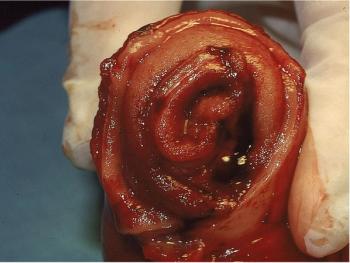
Esophageal diseases are an important cause of dysmotility and regurgitation in dogs and cats. Here’s what you should know about these disorders.

Esophageal diseases are an important cause of dysmotility and regurgitation in dogs and cats. Here’s what you should know about these disorders.

Gastrointestinal motility disorders are a diagnostic and therapeutic challenge for many practitioners. Here’s how to narrow down the affected area so you can identify the cause and provide appropriate treatment.

Identifying the condition can help avoid delayed recovery.

These tests can help narrow down your differential veterinary diagnoses for chronic enteropathies.

Esophageal strictures may occur from gastroesophageal reflux (often during surgery), esophageal foreign bodies, neoplasia, and the ingestion of caustic substances.

Controversy: Histologic evaluation of biopsy specimens is required for definitive diagnosis.

Protein-losing enteropathy (PLE) denotes a clinical condition characterized by excessive loss of plasma proteins into the gastrointestinal tract.

In recent years, the availability and extended use of rigid and flexible endoscopy has led to a marked increase in diagnostic procedures involving visualization and biopsy of the upper and lower gastrointestinal (GI) tract in domestic animals.

Esophagitis may be caused by chemical injury from ingested substances, gastroesophageal reflux (secondary to general anesthesia, hiatal defects, persistent vomiting, malpositioned nasoesophageal/pharyngostomy tubes), or esophageal foreign bodies.

Published: November 18th 2020 | Updated:

Published: April 1st 2008 | Updated:

Published: April 1st 2008 | Updated:

Published: April 1st 2008 | Updated:

Published: April 1st 2008 | Updated:

Published: April 1st 2008 | Updated: